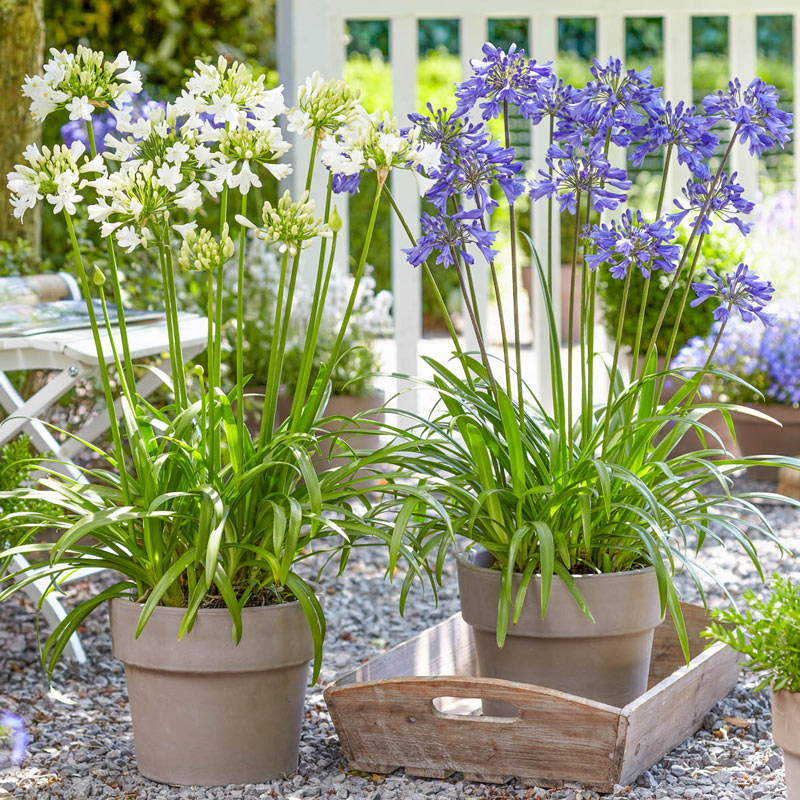Exactly how to Plant and Maintain Agapanthus in Your Garden
Exactly how to Plant and Maintain Agapanthus in Your Garden
Blog Article
Grasping the Art of Agapanthus Treatment: Necessary Actions for Healthy Growth and Vibrant Blooms
In the realm of horticulture, the farming of agapanthus stands as a gratifying undertaking for those who seek to nurture these stylish blooming plants. From choosing the ideal range to grasping pruning methods, the journey towards growing growing agapanthus plants is diverse and holds the crucial to opening the full capacity of these botanical treasures.

Picking the Right Agapanthus Selection

When choosing the best Agapanthus selection for your garden, consider aspects such as environment suitability, bloom color, and growth practice. Additionally, take into consideration the environment in your area to make certain the Agapanthus range you pick can thrive in your particular problems. Understanding the growth behavior of different Agapanthus selections is critical for appropriate positioning within your yard.
Suitable Planting Conditions
Considering the optimum ecological needs is necessary for successful Agapanthus farming. Agapanthus thrives in well-draining dirt with a slightly acidic to neutral pH level. When growing, select a place that gets complete sunshine to partial color. In hotter environments, supplying some afternoon shade can stop scorching of the fallen leaves. Agapanthus plants are delicate to cold temperatures and should be safeguarded from frost throughout winter season.
To make sure healthy and balanced growth and dynamic blooms, plant Agapanthus light bulbs at a deepness of concerning 2-4 inches and area them 8-12 inches apart. Mulching around the base of the plants aids preserve moisture and reduces weed growth.
Watering and Feeding Tips
Maintaining correct dampness levels and offering necessary nutrients are key aspects in the care routine for Agapanthus plants. When it comes to sprinkling Agapanthus, it is crucial to strike an equilibrium. These plants favor regularly damp soil yet are susceptible to root rot if overwatered.
Feeding Agapanthus is essential for advertising healthy and balanced development and respected blossoms. Use a well balanced fertilizer, such as a 10-10-10 formula, in the very early springtime as new growth arises. By complying with these watering and fertilizing pointers, you can ensure your Agapanthus plants prosper and create dynamic, resilient blooms.
Pruning Techniques for Agapanthus
Pruning Agapanthus plants at the suitable times and with proper strategies is essential for preserving their wellness and advertising ideal development and blooming. The suitable time to prune Agapanthus is in late winter season or very early springtime prior to new growth arises.
For flowered stems, wait until the blossoms have actually withered and then trim them back to the base. This not only cleans the plant's appearance but also motivates the development of new blossom buds. Deadheading spent flowers can additionally reroute the plant's power right into creating even more blooms instead of setting seeds. However, if you desire to collect seeds for propagation, leave some blossoms to completely dry and fully grown on the plant.
Remember to utilize clean, sharp tools to make specific cuts and lower the danger of presenting diseases. Agapanthus. Normal trimming will certainly assist keep your Agapanthus looking healthy and neat while ensuring a bountiful display screen of attractive blooms
Handling Common Parasites and Conditions
After making sure appropriate trimming strategies go to this site for Agapanthus, it is essential to deal with typical parasites and diseases that can influence the health and vigor of these plants. One common pest that influences Agapanthus is the Agapanthus gall midge.
One more typical concern is fungal fallen leave area, which provides as dark sores on the fallen leaves. To stop fungal diseases, make certain great air blood circulation around try here the plants, stay clear of overhead watering, and eliminate any type of infected leaves immediately. Furthermore, Agapanthus plants can struggle with origin rot if they are planted in badly draining pipes soil. To avoid this, plant Agapanthus in well-draining dirt and stay clear of overwatering. By being vigilant and taking timely action against diseases and parasites, you can help your Agapanthus plants thrive and generate dynamic blooms.

Conclusion
In verdict, mastering the art of agapanthus treatment includes selecting the ideal variety, providing perfect planting conditions, appropriate watering and fertilizing, appropriate pruning methods, and attending to common insects and illness. By following these necessary actions, you can guarantee healthy growth and lively flowers for your site agapanthus plants. Keep in mind to routinely check and maintain your plants to promote their general wellness and longevity.
To make sure healthy and balanced development and lively flowers, plant Agapanthus light bulbs at a deepness of concerning 2-4 inches and area them 8-12 inches apart. By complying with these watering and fertilizing ideas, you can guarantee your Agapanthus plants flourish and create lively, resilient blooms.
One usual bug that impacts Agapanthus is the Agapanthus gall midge. Additionally, Agapanthus plants can suffer from root rot if they are grown in improperly draining pipes dirt. By adhering to these important steps, you can make certain healthy growth and vibrant flowers for your agapanthus plants.
Report this page